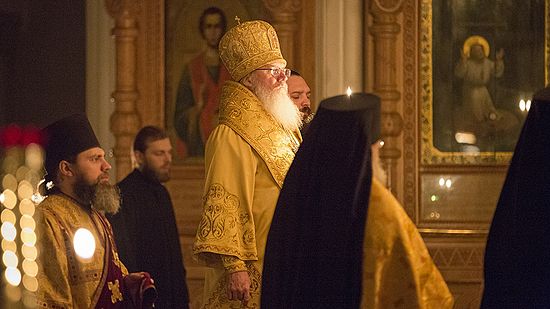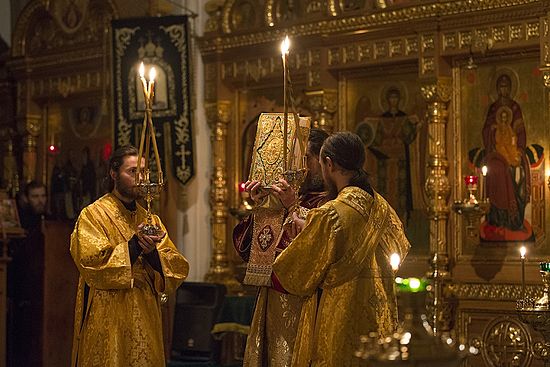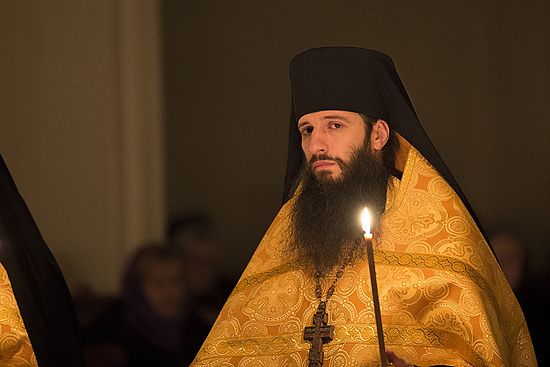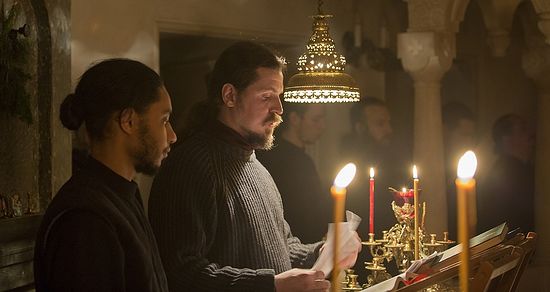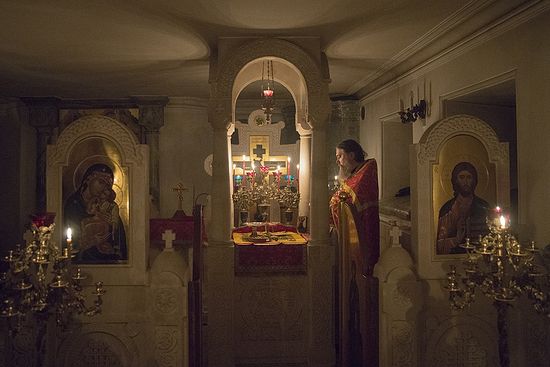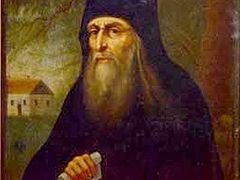Source: Monasterium.ru
Valaam, December 13, 2016
On December 13, 2016, the feast-day of the Holy Apostle Andrew the First-Called, the Stavropegic Valaam Monastery of the Transfiguration celebrated the twenty-seventh anniversary of the rebirth of monastic life on Valaam.
In 1989, the first six monks arrived to restore Valaam Monastery. These were Hieromonks Barsanuphius (Kapralov), Gerontius (Fedorenko), Photius (Begal), Hierodeacon Seraphim (Gordeyev), and novices Leonid Makarov and Vadim Erlikh. With the coming of the first monks, spiritual life began anew on the island, and services were resumed at the Church of Venerable Sergius and Herman of Valaam, the Wonder-workers.
“More than a quarter-century—that is a whole generation,” noted Bishop Pankraty of Troitsk, Abbot of Valaam Monastery. “Now I am happy to see the same pilgrims who visited the monastery nearly thirty years ago and were baptized and entered into the Orthodox Church. I see their children too: now they are adults and many of them have their own families. And now we are baptizing their children. This really gladdens us! Today the second generation of Christian families who found the true faith owing to Valaam Monastery is growing up.
“For centuries, the brethren of Valaam Monastery has preserved a tradition according to which the Holy Apostle Andrew the First-Called stopped here, on Valaam, during his travels through the vast expanse of the future Holy Rus’. In memory of this monastery’s tradition, the great builder of Valaam Monastery, Abbot Damascene, in the mid-nineteenth century built a chapel in honor of Apostle Andrew the First-Called and a memorial cross here. Later, when this site was visited by the prominent Russian merchant and benefactor Innocent (later Schema-Monk Innocent) Mikhailovich Sibiryakov (1860-1901) shortly before his move to the St. Andrew’s Skete on Holy Mount Athos, his heart was filled with the desire to build a Church in honor of Apostle Andrew the First-Called. Thanks to his contribution a fine church was constructed here.
“Valaam was predestined by God to be a place of solitary monastic prayer, a place of ascetic labors—and we should always keep this in mind. We mustn’t grow slack but endure all the temporary hardships and temptations, all the sorrows which are inevitable on the monastic path for the sake of the promise of Christ, Who said, He that shall endure unto the end, the same shall be saved (Mt. 24:13) and Rejoice, and be exceeding glad: for great is your reward in heaven (Mt. 5:12).”

